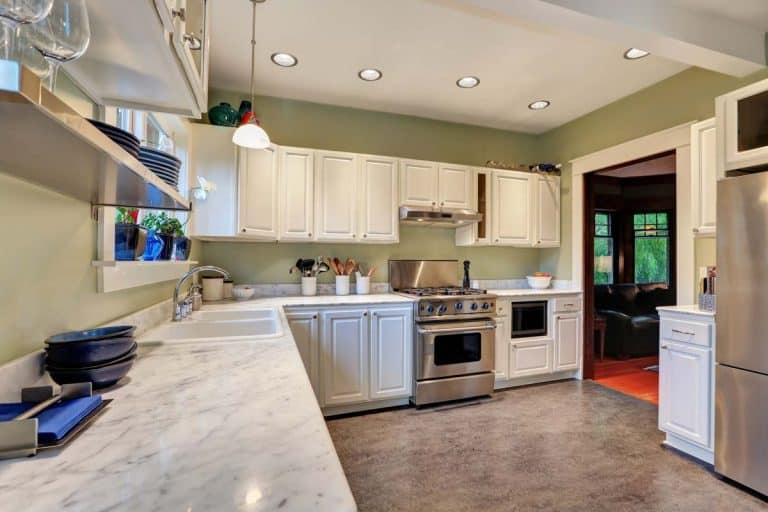Flooring Cost Calculator for Fast And Easy Estimates
Determining the cost to install new flooring can be complicated, with many variables like flooring type, underlayment, and special finishes to consider. That’s why I developed an easy-to-use flooring cost calculator to estimate the total price for your next flooring project.
Flooring Price Calculator
How to Use the Flooring Calculator
To get started, simply input the length and width of your room in feet. You can use decimals if needed – for example, enter 10.5 feet instead of 10 feet 6 inches. Next, select the type of flooring you want installed from the dropdown menu. Options include hardwood, tile, laminate, and carpet. Average material and installation costs per square foot are pre-loaded for each type.
If you received a custom quote already, you can optionally override the averages by entering the exact material and installation costs quoted by your supplier or contractor. Leaving those fields blank will make the calculator default to the typical pricing for your flooring selection.
You also have the option to add underlayment for extra cushioning and sound insulation. Choose from no underlayment, standard foam, or high-end premium padding. To protect your floors or make them easier to clean, you can pick a special finish too – leave as none, add stain resistance, or make them 100% waterproof.
Once all selections are made, hit “Calculate Cost” to see the total estimate. The system will multiple the square footage of your room by the cost per square foot for each selected option and add them together for the grand total. You’ll get a detailed breakdown so you know exactly where the pricing comes from.
The calculator has logic built in to validate entries are valid numbers greater than zero, determine the room’s area, pull predefined average costs for materials/install/etc. or use custom values if provided, and add all line items to display the total cost.
For example, let’s say your room is 12 feet by 10 feet. You pick hardwood floors without custom pricing. It would estimate:
Room Area: 12 x 10 = 120 sq ft
Material Cost: 120 sq ft x $10/sq ft = $1,200
Installation Cost: 120 sq ft x $8/sq ft = $960 Underlayment and Special Finish Costs = $0
Total Estimate = $1,200 + $960 + $0 = $2,160
The result breakdown would display the calculations above, quoting you $2,160 for 120 square feet of new hardwood installation.

Saving Money On Flooring Tips
When it comes to flooring, there are many small decisions we can make that end up saving quite a bit of money in the long run. First, opt for more affordable flooring materials like laminate, vinyl, or carpet instead of pricier options like hardwood or natural stone. Laminate provides the visual appeal of wood for less, while vinyl is durable, water-resistant, and budget-friendly. Carpet is also usually cheaper per square foot, making it ideal for covering larger spaces.
Another easy way to save is by shopping sales, bulk purchasing for volume discounts, using coupons and rebates, and comparing multiple supplier quotes to find the best deal. Sometimes online retailers offer lower prices compared to local stores too. If you have the DIY skills, self-installing the new floor can majorly reduce labor charges. Purchase convenient installation kits equipped with all the necessary tools and instructions to make the process smooth.
There are also more unconventional routes to scoring a deal, like buying remnants, overstock materials, or second-hand flooring. Remnants are leftover tile or planks from bigger jobs sold at slashed prices. Overstock is discontinued or excess inventory also offered very affordably. Even reclaimed wood or refurbished flooring can provide one-of-a-kind visuals while keeping costs low.
Floating floors that don’t require nails, glue, or adhesive for installation like laminates, vinyl planks, or engineered wood can save time, tools, and hassle too. Being strategic about high-end versus affordable materials is another great tip, like using expensive porcelain, marble, or exotic wood as accents or in high-traffic spots instead of the entire space. Lastly, proper maintenance to avoid replacements and protective measures like furniture pads and floor mats make existing flooring last longer, maximizing your initial investment.
By following these simple steps, you can utilize this calculator to budget for your next flooring project with ease! Let me know if any part of these instructions needs clarification.






